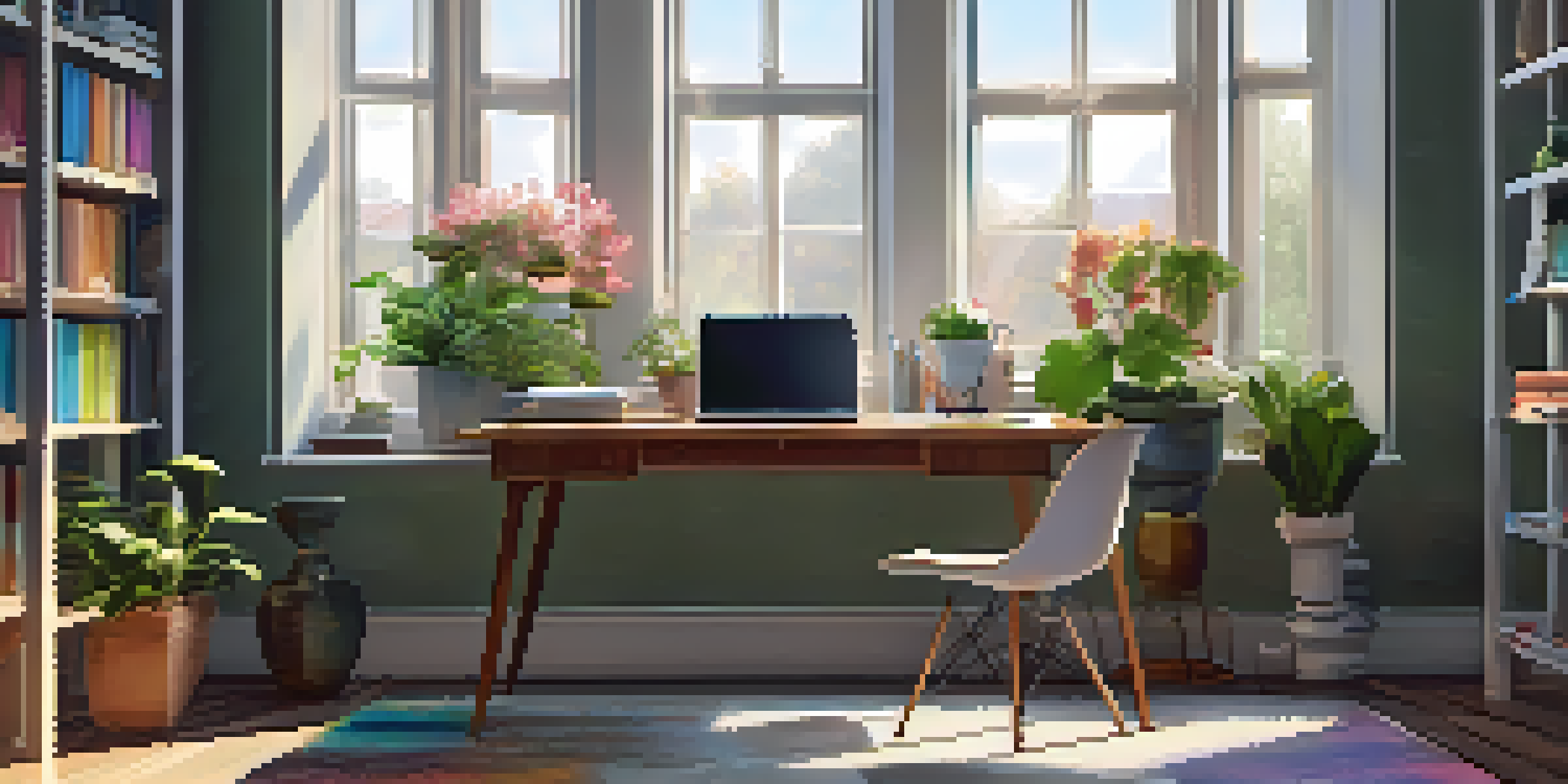The Role of Creativity in Enhancing Work-Life Balance

Understanding Work-Life Balance and Its Importance
Work-life balance refers to the equilibrium between personal life and professional responsibilities. Achieving this balance is crucial for overall well-being, as it promotes mental health and reduces stress. In a world where work often encroaches on personal time, understanding this concept helps us prioritize what truly matters.
Balance is not better time management, but better boundary management. Balance means making choices and enjoying those choices.
When we maintain a healthy work-life balance, we not only boost our productivity but also enhance our relationships and personal satisfaction. Think of it as a seesaw; if one side is too heavy, the other side struggles to rise. Finding that balance often requires intentional choices and strategies.
Moreover, the quest for work-life balance can often feel overwhelming. However, incorporating creativity into this balance can simplify the process and make it more enjoyable. By exploring innovative ways to manage our time, we can create a lifestyle that feels fulfilling and sustainable.
How Creativity Sparks Joy in Daily Tasks
Integrating creativity into everyday tasks can transform mundane routines into enjoyable experiences. For instance, if you dread cleaning your home, consider turning on your favorite music and dancing while you tidy up. This playful approach not only makes the task more enjoyable but also infuses energy into your day.

Engaging in creative activities, like painting or gardening, can provide a much-needed break from work-related stress. These activities allow our minds to wander and rejuvenate, promoting a sense of well-being. When we give ourselves permission to be creative, we often find joy in the simplest of tasks.
Work-Life Balance Enhances Well-Being
Achieving a healthy work-life balance is essential for reducing stress and improving overall mental health.
Thus, by reimagining daily activities with a creative twist, we can cultivate a positive mindset that contributes to better work-life balance. This shift in perspective helps remind us that even the most routine tasks can bring us joy and satisfaction.
Creative Problem Solving for Workplace Stress
Creativity is not just for artists; it’s a powerful tool for problem-solving in the workplace as well. When faced with challenges, thinking outside the box can lead to innovative solutions that alleviate stress. For instance, reorganizing team workflows or implementing flexible schedules are creative approaches to common workplace issues.
Creativity is intelligence having fun.
Using creativity to tackle problems can also involve brainstorming sessions where all ideas are welcome, no matter how unconventional. This collaborative approach fosters a sense of community and support among colleagues, reducing feelings of isolation. When teams work together creatively, they often find that stressors become more manageable.
Ultimately, embracing creative problem-solving techniques can lead to a more harmonious work environment. When employees feel empowered to express their ideas and participate in solutions, they contribute to a culture that values work-life balance.
The Role of Hobbies in Achieving Balance
Hobbies are a fantastic way to inject creativity into our lives and achieve work-life balance. Engaging in activities we love outside of work can help us recharge and refocus. Whether it’s playing a musical instrument, writing, or crafting, these pursuits bring joy and satisfaction beyond our professional roles.
Having a hobby can also act as a stress-reliever, providing an escape from daily pressures. It’s like having a secret garden where you can cultivate your interests without the constraints of work. This personal time for creativity nurtures our passions, enhancing our overall well-being.
Creativity Transforms Daily Routines
Integrating creativity into everyday tasks can turn mundane experiences into enjoyable and fulfilling activities.
Incorporating hobbies into our routine signals to ourselves that we value personal time just as much as professional time. By prioritizing these activities, we foster a healthier work-life balance that leads to greater happiness and fulfillment.
Mindfulness as a Creative Practice
Mindfulness is a powerful practice that can enhance creativity and work-life balance. By being present in the moment, we can better appreciate our experiences and find inspiration in everyday life. Simple mindfulness techniques, such as deep breathing or meditation, can open our minds to new ideas.
When we practice mindfulness, we cultivate awareness of our thoughts and feelings, allowing us to respond rather than react to stressors. This conscious approach can lead to creative solutions for managing our time and responsibilities more effectively. It’s like hitting the reset button on our busy minds.
Integrating mindfulness into our daily routine not only enhances creativity but also promotes a sense of calm and balance. This practice helps ground us, allowing for greater focus on both work and personal life.
Balancing Technology and Creativity
In our tech-driven world, finding the right balance between technology and creativity is essential. While technology can enhance productivity, it can also lead to burnout if not managed wisely. It’s important to set boundaries around screen time and prioritize engaging in creative activities that foster connection and fulfillment.
For example, instead of scrolling through social media during breaks, consider taking a walk in nature or doodling in a sketchbook. These alternatives can help refresh our minds and invigorate our creativity. By stepping away from screens, we can often spark new ideas and insights.
Supportive Environments Foster Creativity
Creating nurturing spaces, whether at home or work, encourages innovation and contributes to a balanced life.
Ultimately, finding harmony between technology usage and creative pursuits allows us to enjoy the benefits of both without feeling overwhelmed. This balance is crucial for maintaining our overall work-life equilibrium.
Creating a Supportive Environment for Creativity
A supportive environment is vital for nurturing creativity and maintaining work-life balance. Whether at home or in the office, fostering spaces that inspire innovation can make a significant difference. Simple changes, like adding plants or colorful artwork, can spark joy and creativity in our surroundings.
Moreover, encouraging open communication and collaboration among team members creates a culture where ideas flourish. When people feel safe to express themselves and share their thoughts, creativity thrives. This supportive atmosphere directly contributes to a more balanced work-life experience.

By prioritizing a nurturing environment, we empower ourselves and others to embrace creativity. This, in turn, leads to increased satisfaction in both personal and professional realms.